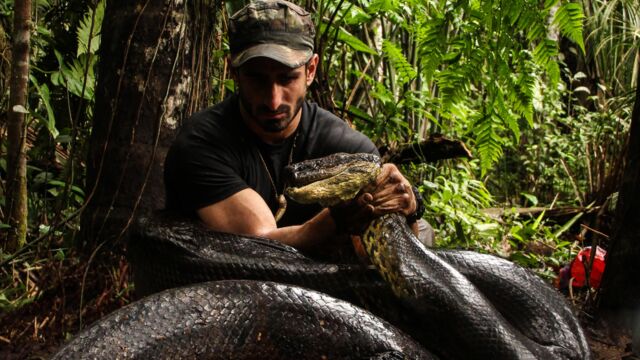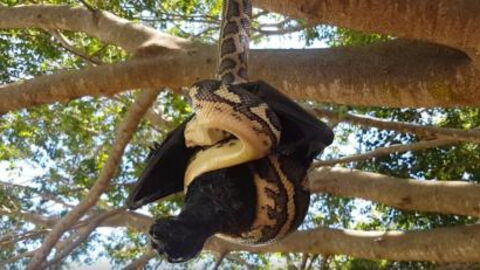The Discovery Channel once released a shocking documentary calledEaten Alive. From interviews to exciting clips, everything was done to get the public talking about the show and it worked until it created controversy which was obvious was going to happen when someone films a man attempting to get himself eaten alive by an anaconda.
Discover our latest podcast
Raising awareness for the Amazon Rainforest
The idea came from Paul Rosolie, naturalist and herpetologist, after asking himself what he could do to raise awareness about the destruction of the Amazon Rainforest. Rosolie explained to the Telegraph:
Everybody on Earth knows that the rainforests are disappearing and most people can tell you how important they are, but still, not enough people are paying attention, not enough people realize this is such a problem.
To convince the public to pay attention, he had to think of something that would make them. This thinking led him to a completely absurd challenge: letting himself be attacked by an anaconda, one of the biggest snakes in the world.

A controversial idea
Even though his end goal was admirable and noble, the specialist quickly caught the attention of numerous crowds of people and associations for animal protection, including PETA who commented on his challenge saying that even though his heart was in the right place, the snake was 'tormented for the sake of ratings' and a publicity stunt.
As many expected, the show did not keep the promise that had been made weeks before: Rosolie was not really swallowed alive by an anaconda. What a way to deceive the public who were looking forward to seeing the inside of a giant snake! It didn’t take long for the verdict to come out. One disappointed viewer tweeted soon after the broadcast:
Eaten Alive shoulda been named 'I wanted to get eaten alive, but just got a big hug and didn't even get partially in.'
'Eaten Alive' or not?
In fact, Paul Rosolie didn’t succeed in his mission and his team had to intervene when the anaconda began to squeeze. In order to stop the constricting snake from suffocating him, the naturalist and his team had designed a type of armour made from carbon fibres and equipped with its own respiratory system. With this combination of his team and the special suit, the man approached a female anaconda measuring 6 metres long that they found in the forest. The herpetologist recounted:
When I went up to the snake, it didn’t try to eat me right away. It tried to escape. And when I provoked it a little bit and acted a little more like a predator, that’s when it turned around and defended itself.
But what happened next did not happen as he had expected, nor as he had suggested. Rosolie had clearly underestimated the snake’s strength. He explained:
I felt her jaw on my helmet and I could hear a gurgling and wheezing.
He also felt her strength and felt her squeezing around his arm which made it impossible for him to move. He continued:
She got my arm in a position where her force was fully on my exposed arm. I started to feel the blood drain out of my hand and I felt the bone flex, and when I got to the point where I felt like it was going to snap I had to tap out.
Panic-stricken, after an hour confronted with this reptile, the 30-year-old naturalist called out for help. The team was quick to intervene to get the snake to release her grip around Rosolie, who was exhausted by his fight against the giant.















